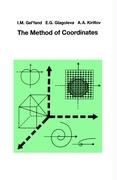Read more
The need for improved mathematics education at the high school andcollege levels has never been more apparent than in the 1990s. Asearly as the 1960s, I. M. Gel'fand and his colleagues in the USSRthought hard about this same question and developed a style forpresenting basic mathematics in a clear and simple form that engagedthe curiosity and intellectual interest of thousands of high schooland college students. These same ideas, this same content, unchangedby over thirty years of experience and mathematical development, areavailable in the present books to any student who is willing to read,to be stimulated and to learn."The Method of Coordinates" is a way of transferring geometric imagesinto formulas, a method for describing pictures by numbers and lettersdenoting constants and variables. It is fundamental to the study ofcalculus and other mathematical topics. Teachers of mathematics willfind here a fresh understanding of the subject and a valuable path tothe training of students in mathematical concepts and skills.
List of contents
Preface.- Foreword.- Introduction.- PART I.- Chapter 1. The Coordinates of Points on a Line.- Chapter 2. The Coordinates of Points in the Plane.- Chapter 3. The Coordinates of a Point in Space.- PART II.- Chapter 1. Introduction.- Chapter 2. Four-Dimensional Space.- Chapter 3. The Four-Dimensional Cube.
Summary
The need for improved mathematics education at the high school and
college levels has never been more apparent than in the 1990s. As
early as the 1960s, I. M. Gel'fand and his colleagues in the USSR
thought hard about this same question and developed a style for
presenting basic mathematics in a clear and simple form that engaged
the curiosity and intellectual interest of thousands of high school
and college students. These same ideas, this same content, unchanged
by over thirty years of experience and mathematical development, are
available in the present books to any student who is willing to read,
to be stimulated and to learn.
"The Method of Coordinates" is a way of transferring geometric images
into formulas, a method for describing pictures by numbers and letters
denoting constants and variables. It is fundamental to the study of
calculus and other mathematical topics. Teachers of mathematics will
find here a fresh understanding of the subject and a valuable path to
the training of students in mathematical concepts and skills.
Report
"All through both volumes ['Functions & Graphs' and 'The Methods of Coordinates'], one finds a careful description of the step-by-step thinking process that leads up to the correct definition of a concept or to an argument that clinches in the proof of a theorem. We are ... very fortunate that an account of this caliber has finally made it to printed pages... Anyone who has taken this guided tour will never be intimidated ever again... High school students (or teachers) reading through these two books would learn an enormous amount of good mathematics. More importantly, they would also get a glimpse of how mathematics is done."
--- H. Wu, The Mathematical Intelligencer
"This book is a concise and compact treatment of the essential ideas of coordinate geometry. The authors demonstrate powerfully how geomtric ides may be communicated and studied effectively without the aid of pictures. Graphics are of course of vital importance int he methods of Euclidean geometry. However, the methods of coordinate geometry are able to transform pure geometric ideas into algebraic manipulations where the meaning is very clear once the formalism is learnt. In particular the book demonstrates the value of conveying information in the form of images embedded in formulas. This is very useful in the transmission of information by electronic means. . . This book is a valuable tool for teaching the redimentary concepts of analytical geometry. It contains a number of excellent examples and exercises which go further than a mere introductory programme. the exercises, while not numerous, are very thought-provoking and are bound to pose a serious challenge to the interested student."
---The Mathematical Gazette

